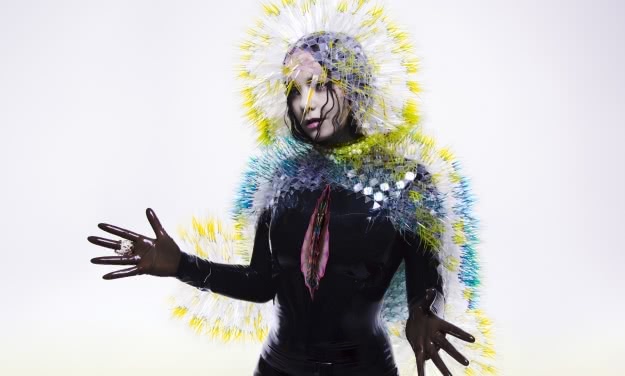Reviewed onSaturday June 4
Vivid’s Björk Digital premiere wasn’t about a Björk – it was about Björks, plural; hundreds of them, each cast in an ever-so-slightly different light. If it weren’t for the role the pop auteur’s latest album, Vulnicura, played as a kind of fulcrum upon which the entire night could hinge, the evening would have seemed utterly deranged – a shattered-mirror-load of howling, tear-stained faces, all of them identical.
There was a digital version of Björk, her pixelated form tearing itself into poorly rendered composite parts, as her audience members stood separated, boxed in by the clunky VR devices that allowed them to steal glimpses of the disintegrating form.
There were two Björks trapped in giant screens, both clad in oil-spill slick dresses, both singing ‘Black Lake’ from opposite ends of the one room, as the hushed onlookers flicked their heads from one form to the other, awkwardly catching each other’s gaze.
There were younger Björks too – happier Björks, Björks years away from the break-up that would birth Vulnicura, all singing down the barrel of a dozen different lenses as a dedicated ‘Björk Cinema’ played a seemingly endless loop of the singer’s past videos. Grinning Björks, dancing down streets; black-and-white Björks riding the backs of buses; white, milky Björks, red lengths of string pouring out of their nipples like ticker tape.
There was even Björk in app form, pinned down by 20-odd Android devices strapped to a table. Fans – some old, some young, some dressed as the singer, others dressed down – plugged themselves into the tablets via headphones, clicking away at screens that matched snatches of Vulnicura with shots of human skin tissue.
And then, in the corner of Carriageworks’ biggest room, surrounded by plastic plants and clad in an ornate headdress, was the real Björk. She drew the biggest crowd, of course, head bent, busy playing DJ and spinning strange snatches of African tribal music. Fans packed in tight, throwing up their phones to shoot over the gaggle as though the singer were some animal at the zoo, pushing and shoving their way ever closer.
But for the fans at the front – the ones who got the uninterrupted view of the musician – the experience was an oddly deflating one. After all, Björk isn’t made of pixels, or oil, or red string – she’s made of flesh and blood. Maybe that’s the lesson, then. Maybe that’s the point of Björk Digital. Don’t idolise the real self. Idolise the imagined one. Don’t go to the artist. Go to the art.



































